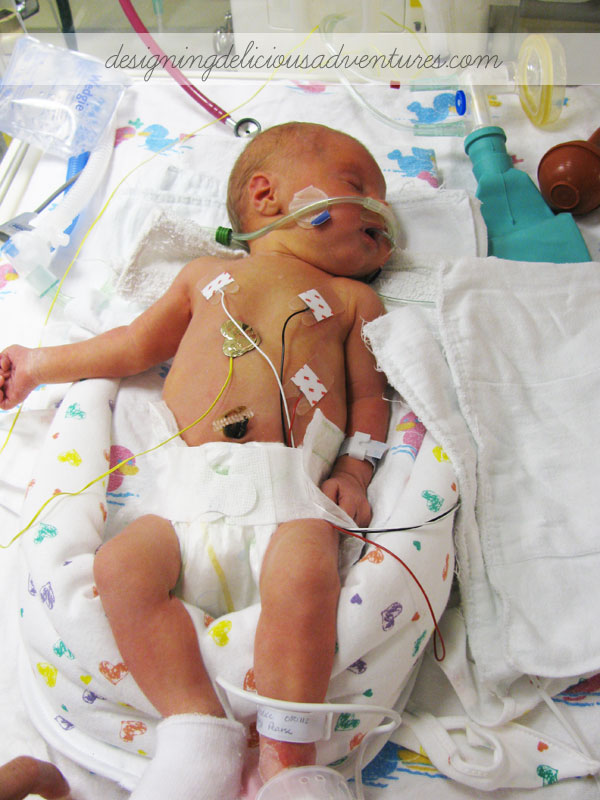With Olivia’s early arrival, we were welcomed into a brand new exclusive club: the world of preemies. We didn’t ask for this entrance pass and I wouldn’t wish our experience on my worst enemy. There were endless hours of waiting, grieving, worrying, and coordinating arrangements.
As a mama-to-be, I had heard countless stories of women going past their due date and trying anything to get their labors started. I had NO CLUE how common the other extreme was! The March of Dimes currently states that 1 in 9 women will deliver prematurely… I nearly fell out of my chair when I heard this number! Our own qualitative research immediately validated this high prevalence. It seemed everyone we talked to about our experience either knew someone that had delivered early or was themselves a preemie! In my humble opinion, it seems like a knowledge gap exists in providing critical information to women on this reality. There has to be a way to communicate this statistic so women can prepare their minds and create realistic expectations… all without creating needless worry or planting a seed of doubt into their minds that they can carry the baby to term.
I’ll never forget what the attending neonatalogist told us after Olivia’s delivery. After explaining a procedure and seeing the worried looks on our faces, he stated: “Olivia will be the person she is meant to be. She is just going to have a longer story.” That little nugget of reassurance was such a comfort.
It quickly became clear that the medical goals for our 33 Week-er included:
Breathing easily and safely.
- Olivia’s breathing began to deteriorate after she was born to the point she was on 70% oxygen. The doctors immediately suggested treating her lungs with a round of surfactant, which would help keep her the tiny alveoli in her lungs from sticking together and allow her lungs to inflate more easily.
- For the first couple of days, Olivia was hooked up to a C-PAP machine (continuous positive airway pressure). This device delivered oxygen along with gentle pressure to keep her airways open.
- Olivia graduated to a nasal cannula emitting high humidity before she was taken off all oxygen.
- One of the nurses called Olivia her little hummingbird as our girl would have periods where her breathing became very rapid. Other times, she experienced periods of apnea. To counteract this problem, the doctors started her on a brief regimen of caffeine. This drug had to be gradually stepped down and out of her system for at least 1 week before they considered letting her go home.
Regulating her temperature.
- Olivia’s journey started in an open air bed with a warmer directly overhead to maintain her temperature. When her condition stabilized, she was moved to an isolette. This little incubator, even though it looked more intimidating, was actually a step in the right direction! After Olivia was able to regulate her temperature, she was moved to an open air crib with frequent temperature checks.
Coordinating her suck/breathe/swallow reflex.
- Progress in this department was SLOW. The nursing team placed a g-tube down Olivia’s nose into her tummy relatively early so they could “gavage” her feedings or directly provide breastmilk/formula to her stomach.
- During some of Olivia’s first attempts at bottle feeding, she only took in about 5-15 mL of fluids. She progressively worked her way up to taking 60 mL during most feedings throughout the day. If Olivia was awake, the nurses would allow us to attempt bottle feeding. Any amount that she did not finish in 30 minutes was then given through the g-tube. If Olivia didn’t finish within this critical window, the nurses explained that she would be expending too many precious calories compared to the amount she was taking from the bottle. After Olivia’s breathing improved and she was capable of regulating her temperature, we were in a holding pattern waiting for this particular reflex to properly mature. Some days, she took her bottle feedings like a champ. Other days, Olivia was more interested in sleeping so many of her meals were “gavaged.” The nurses reassured us that one day, everything would just click. Imagine our surprise when we arrived at the hospital one day to find Olivia had pulled out her g-tube by herself! Our spirited sweetheart was ready!
- Thoughts in general: I have an incredible amount of respect for this reflex. Olivia choked two times during her feedings while I was home alone after we brought her home from the hospital. My heart nearly jumped out of its chest from sheer panic. Her system was still sorting out glitches in the required sequence of movements.
We are eternally grateful that Olivia’s prognosis was always positive during her time in the Special Care Unit. We never questioned whether or not she would make it. All in all, our experience was a CAKE WALK compared to the complications awaiting parents of other premature babies, especially micro-preemies (infants born before 26 weeks gestation or weighing less than 800 grams). I can’t even imagine, even though I’ve had a first hand glimpse into the preemie world, the roller coaster of emotions that these parents face on a daily basis and the compounding effects of stress.

Leave a Reply